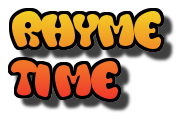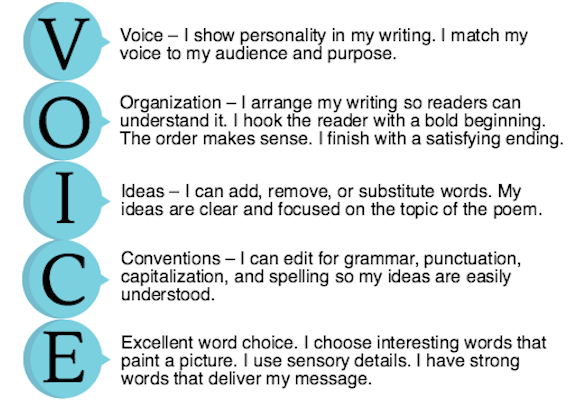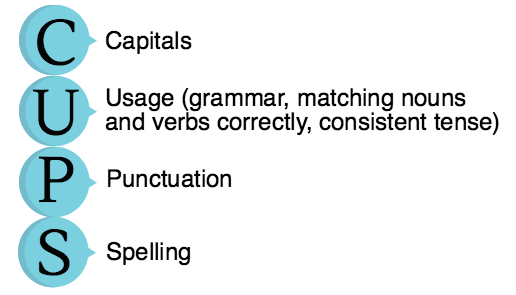4.6 Writing Rhyming Poems
| Site: | Cowichan Valley School District - Moodle |
| Course: | ELA5, CSS, Sferrazza |
| Book: | 4.6 Writing Rhyming Poems |
| Printed by: | Guest user |
| Date: | Thursday, 18 December 2025, 5:45 AM |
Learning Targets
By the end of this lesson, you should be able to say YES to the following questions.
- Can I use language in creative and playful ways to develop style?
- Can I use writing and design processes to plan, develop, and create texts for a variety of purposes and audiences?

Why Write Poetry?
OK, we know you have to write poetry for school, but why do people write poetry? It helps to have a purpose and an audience.
Purposes for writing poetry? What can you think of?
- to entertain
- to capture a moment in life, in science, in history, in art....
- to delight in the magic of language - the patterns and musicality of it
- to persuade in a most entertaining way
- to be mysterious - to say "things" without actually saying them
- to vent or spew emotion - anger, rage, pain, sadness, peace, happiness - to pour emotion onto a page
- to complete an assignment for school
Audiences for poetry? Who would like to read your poetry?
- Some people write for their family members.
- Some people write for themselves - to process the events of the day or to pour out their hearts. Not all poets need an audience.
- Your teacher may be your audience, but hopefully you can share your poetry with others, too.
- Some people write poems to be put to music and played on the radio.
Purpose? Audience?
Yesterday, you read Wayne the Stegosauras. It is at the bottom of this page if you'd like to reread it. Why do you think Ken Nesbitt wrote Wayne the Stegosaurus? What was his purpose?
Who do you think is his main audience?
Wayne the Stegosaurus
by Kenn Nesbitt
Meet the stegosaurus, Wayne.
He doesn't have the biggest brain.
He's long and heavy, wide and tall,
but has a brain that's extra small.
He's not the brightest dinosaur.
He thinks that one plus one is four.
He can't remember up from down.
He thinks the sky is chocolate brown.
He wears his bow tie on his tail
and likes to eat the daily mail.
When playing hide-and-seek he tries
to hide by covering his eyes.
He thinks that black is really white.
He's sure the sun comes out at night.
He thinks that water grows on trees
and when it's hot he starts to freeze.
He's happy when he's feeling ill.
He likes to dance by standing still.
And when it's time to go to bed,
he puts bananas on his head.
He thinks his name is Bob, not Wayne,
but that's what happens when your brain
(although you're big and brave and spiny)
is very, very, very tiny.
Copyright © 2013 Kenn Nesbitt
All Rights Reserved
From www.poetry4kids.com
How To Write A Rhyming Poem - Prewriting 1
As you explore the steps and instructions in this online book, complete the steps on your own in your Learning Guide.

- Choose a topic
- Identify your purpose and audience.
- Brainstorm and organize ideas
 Choose a topic:
Choose a topic:
Brainstorm a few topic ideas. You've read "serious" rhyming poems (Stopping By Woods On a Snowy Evening) and "funny" rhyming poems (Stegosaurus, XBox, Selfie). Your choice of topics can be funny or serious and based on your interests, hobbies, favourite places or seasons, pets.... Almost anything, really.
For example: Pizza, Disneyland, Soccer
Identify your purpose and audience:
Consider your audience and purpose. Who would you like to enjoy your poem? Would you like to write a poem for a specific person? A grandparent? For kids to enjoy? To describe a picture or capture a specific event?
For example:
- I'd like to write a poem that all pizza lovers can relate to.
- I'd like to share my misadventures in Disneyland with kids my age.
- I love soccer more than anything and would like to write a poem for people who love soccer like me or who don't understand how great it is.
 Go to your Learning Guide; in Prewriting 1, you will identify two possible topics, and choose a purpose and audience.
Go to your Learning Guide; in Prewriting 1, you will identify two possible topics, and choose a purpose and audience.
How To Write A Rhyming Poem - Prewriting 2
 Brainstorm and Organize Ideas:
Brainstorm and Organize Ideas:
For your two possible topic ideas, brainstorm some words related to your topic and then list rhyming words for each word. For example, if my topic is pizza, some related words are pepperoni, cheese, sauce, gooey, whiff, and dough. Here are some rhyming possibilities:
cheese - please, wheeze, sneeze, squeaze, tease, antifreeze, guarantees, heart disease, trapeze
cheesy - easy, breezy, queasy, sneezy
sauce - boss, cross, loss, toss
pepperoni - bony, phony, bolonga (pronounced baloney), macaroni, testimony
gooey - chewy, kaplooey, chewy
whiff - sniff, petroglyph, stiff
dough - blow, flow, bestow, aglow, chateau, outgrow, rainbow, van gogh, trudeau
 Go to your Learning Guide; complete Prewriting 2.
Go to your Learning Guide; complete Prewriting 2.
How To Write a Rhyming Poem - Drafting

- Use your ideas and the details you collected during prewriting to write a first draft.
- Try to get all your ideas on paper and don't worry about making your first draft perfect.
- You may choose to write more than one "version" to select from.
Start drafting your poem. As you write, choose if you would like to use rhyming couplets or have the second and fourth lines of each stanza rhyme. You could even have the first, second, and fourth line rhyme like Stopping By Woods on a Snowy Evening.
It is best to write a couple of drafts so you can choose your favourite one to work on.
 For example, here is version 1 (with rhyming couplets):
For example, here is version 1 (with rhyming couplets):
While walking by the pizza shop,
The odour almost made me stop.
All I could think of was gooey cheese,
Begged my mom - could we stop please?
I crave that sweet tomato sauce,
and love the way the dough they toss.
A pizza topped with pepperoni
makes my tastebuds scream in testimony.
And version 2 (second and fourth lines rhyming, first and third lines rhyming):
I dreamed I owned a pizza stand
It all seemed very easy
Kids from all throughout the land
Craved my pizza - t'was so cheesy/
Our famous topping of pepperoni
And secret recipe dough
Earned us praise and testimony
From people like Trudeau.
How To Write A Rhyming Poem - Revising

- Is your rhyming pattern consistent? Does your poem have a good rhythm? Try clapping as you read along to find out.
- Make changes to improve your writing. Where can you add more powerful words? What is not needed? While making this changes, think VOICE:

How To Write A Poem - Editing

- Patrol your writing for CUPS. Make corrections as needed.

Next Steps
 The next step in the writing process is "Evaluating". In your Learning Guide, think and talk about the evaluating questions with your home facilitator. Decide how well you think your rough draft meets the criteria. Revise and edit your poem more, if you feel it is needed.
The next step in the writing process is "Evaluating". In your Learning Guide, think and talk about the evaluating questions with your home facilitator. Decide how well you think your rough draft meets the criteria. Revise and edit your poem more, if you feel it is needed.

 The last step is "Publishing". This step will be saved for project choices at the end of the poetry unit. For now, this lesson and poem are completed. Congratulations!
The last step is "Publishing". This step will be saved for project choices at the end of the poetry unit. For now, this lesson and poem are completed. Congratulations!

Do you have someone you can share your poem with now?
Reminder
In the next day or two, read some poems independently. Then, add to your poetry reading journal to show your independent reading reflections.
